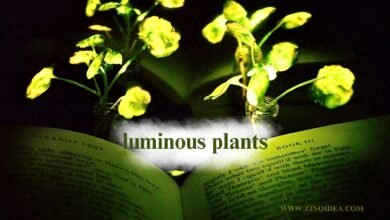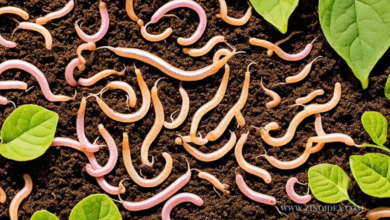The Enchanting World of Firefly Petunias

The firefly petunia is an enchanting addition to any garden, offering a vibrant display of colors and a unique charm. This article delves into the many facets of this remarkable flower, from its botanical characteristics to its care requirements, ensuring that your firefly petunias thrive and bring unparalleled beauty to your outdoor space.
Understanding Firefly Petunias
Botanical Characteristics
Firefly petunias, scientifically known as Petunia x hybrida, are hybrid flowers renowned for their striking appearance. These annual plants are part of the Solanaceae family, which includes other garden favorites like tomatoes and potatoes. Firefly petunia are characterized by their small, trumpet-shaped flowers that come in a variety of colors, including pink, purple, blue, and white. Their compact size and abundant blooms make them ideal for containers, hanging baskets, and garden borders.
Varieties of Firefly Petunias
The firefly petunia comes in several varieties, each with its own unique attributes. Some of the popular varieties include:
- Firefly Pink: Known for its delicate pink blossoms, this variety adds a soft, romantic touch to any garden.
- Firefly Blue: With its vibrant blue flowers, this variety creates a striking contrast against green foliage.
- Firefly White: The pure white blooms of this variety bring a sense of elegance and purity to garden spaces.
Growing Firefly Petunia
Optimal Growing Conditions
To ensure the healthy growth of firefly petunias, it is essential to provide them with the right conditions. These plants thrive in well-drained soil with a pH level between 5.5 and 6.5. They prefer full sun exposure, which means they need at least six hours of direct sunlight daily. However, they can tolerate partial shade, especially in hotter climates.
Planting Firefly Petunias
When planting firefly petunias, start by preparing the soil. Loosen it to a depth of about 12 inches and mix in compost to improve fertility and drainage. Plant the petunias at a distance of 6 to 12 inches apart to allow for proper air circulation and growth. Water the plants thoroughly after planting to help them establish their roots.
Watering and Feeding
Firefly petunias require regular watering, especially during dry periods. Water them deeply but avoid waterlogging, as this can lead to root rot. It is best to water the plants early in the morning to allow the foliage to dry out during the day, reducing the risk of fungal diseases. Feeding the petunias with a balanced, water-soluble fertilizer every two weeks will promote healthy growth and abundant flowering.
Caring for Firefly Petunias
Pruning and Deadheading
Regular pruning and deadheading are crucial for maintaining the health and appearance of firefly petunias. Prune the plants by pinching back the stems to encourage bushier growth. Deadheading, or removing spent flowers, will prevent the plant from setting seed and encourage continuous blooming throughout the growing season.
Pest and Disease Management
Firefly petunias are relatively resistant to pests and diseases, but they can occasionally be affected by aphids, spider mites, and whiteflies. To manage these pests, inspect the plants regularly and use insecticidal soap or neem oil if necessary. Fungal diseases such as powdery mildew and botrytis can be prevented by ensuring proper air circulation and avoiding overhead watering.
Designing with Firefly Petunias
Container Gardening
One of the most popular ways to showcase firefly petunias is through container gardening. Their compact size and profuse blooming make them perfect candidates for pots, hanging baskets, and window boxes. When planting in containers, use a high-quality potting mix and ensure the containers have drainage holes to prevent waterlogging. Combine firefly_petunias with other annuals like marigolds and lobelias for a stunning display.
Garden Borders and Edging
Firefly petunias are excellent choices for garden borders and edging. Their vibrant colors and low-growing habit create a beautiful, defined edge along pathways, flower beds, and garden borders. Plant them in masses for a bold statement or mix them with other flowering plants for a more diverse and colorful garden design.
Seasonal Care for Firefly Petunia
Spring and Summer Care
During the spring and summer months, firefly petunias are in their prime. Ensure they receive adequate water and nutrients to support their rapid growth and flowering. Keep an eye out for pests and diseases, and address any issues promptly to maintain the health of the plants.
Fall and Winter Care
As the weather cools in the fall, firefly petunias will begin to slow down. Gradually reduce watering and fertilizing as the plants enter dormancy. In regions with mild winters, firefly_petunias can sometimes survive as perennials. However, in colder climates, they are typically treated as annuals and will need to be replanted the following spring.
The Aesthetic and Ecological Benefits of Firefly Petunias
Enhancing Garden Beauty
The primary appeal of firefly petunias lies in their ability to enhance the beauty of gardens with their vibrant and varied colors. Their continuous blooms provide a dynamic and eye-catching display that can transform any outdoor space into a lively and inviting environment.
Attracting Pollinators
Firefly petunias are also beneficial from an ecological perspective. They attract pollinators such as bees, butterflies, and hummingbirds, which play a crucial role in the pollination of many garden plants. By planting firefly_petunias, gardeners can support local pollinator populations and contribute to a healthier ecosystem.
Firefly petunias are a versatile and stunning addition to any garden, offering a burst of color and charm that is hard to match. By understanding their botanical characteristics, optimal growing conditions, and proper care techniques, gardeners can enjoy the beauty of firefly_petunias throughout the growing season. Whether planted in containers, used for garden borders, or integrated into a mixed flower bed, these enchanting flowers are sure to make a significant impact.



